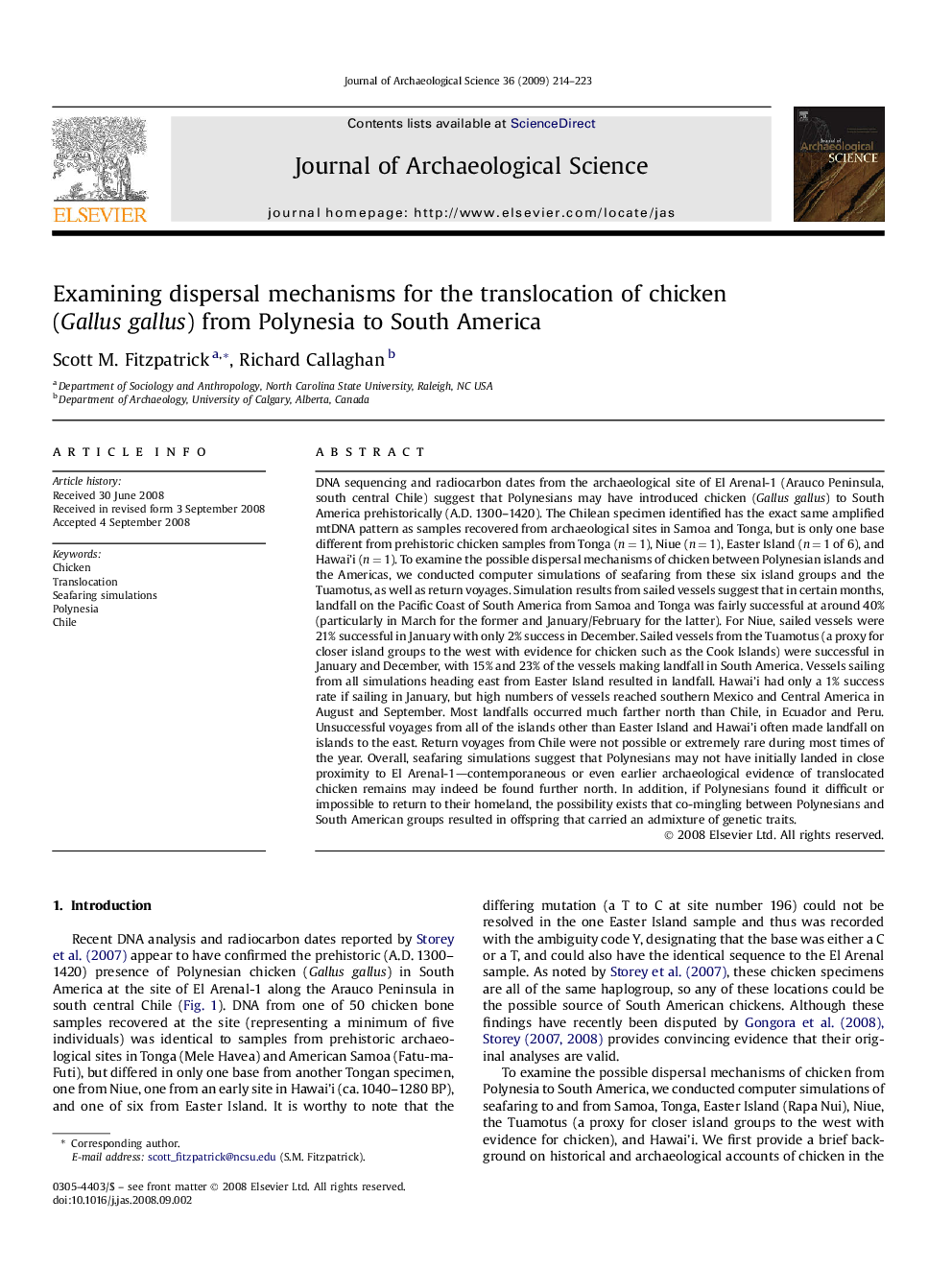| کد مقاله | کد نشریه | سال انتشار | مقاله انگلیسی | نسخه تمام متن |
|---|---|---|---|---|
| 1036233 | 943880 | 2009 | 10 صفحه PDF | دانلود رایگان |

DNA sequencing and radiocarbon dates from the archaeological site of El Arenal-1 (Arauco Peninsula, south central Chile) suggest that Polynesians may have introduced chicken (Gallus gallus) to South America prehistorically (A.D. 1300–1420). The Chilean specimen identified has the exact same amplified mtDNA pattern as samples recovered from archaeological sites in Samoa and Tonga, but is only one base different from prehistoric chicken samples from Tonga (n = 1), Niue (n = 1), Easter Island (n = 1 of 6), and Hawai'i (n = 1). To examine the possible dispersal mechanisms of chicken between Polynesian islands and the Americas, we conducted computer simulations of seafaring from these six island groups and the Tuamotus, as well as return voyages. Simulation results from sailed vessels suggest that in certain months, landfall on the Pacific Coast of South America from Samoa and Tonga was fairly successful at around 40% (particularly in March for the former and January/February for the latter). For Niue, sailed vessels were 21% successful in January with only 2% success in December. Sailed vessels from the Tuamotus (a proxy for closer island groups to the west with evidence for chicken such as the Cook Islands) were successful in January and December, with 15% and 23% of the vessels making landfall in South America. Vessels sailing from all simulations heading east from Easter Island resulted in landfall. Hawai'i had only a 1% success rate if sailing in January, but high numbers of vessels reached southern Mexico and Central America in August and September. Most landfalls occurred much farther north than Chile, in Ecuador and Peru. Unsuccessful voyages from all of the islands other than Easter Island and Hawai'i often made landfall on islands to the east. Return voyages from Chile were not possible or extremely rare during most times of the year. Overall, seafaring simulations suggest that Polynesians may not have initially landed in close proximity to El Arenal-1—contemporaneous or even earlier archaeological evidence of translocated chicken remains may indeed be found further north. In addition, if Polynesians found it difficult or impossible to return to their homeland, the possibility exists that co-mingling between Polynesians and South American groups resulted in offspring that carried an admixture of genetic traits.
Journal: Journal of Archaeological Science - Volume 36, Issue 2, February 2009, Pages 214–223